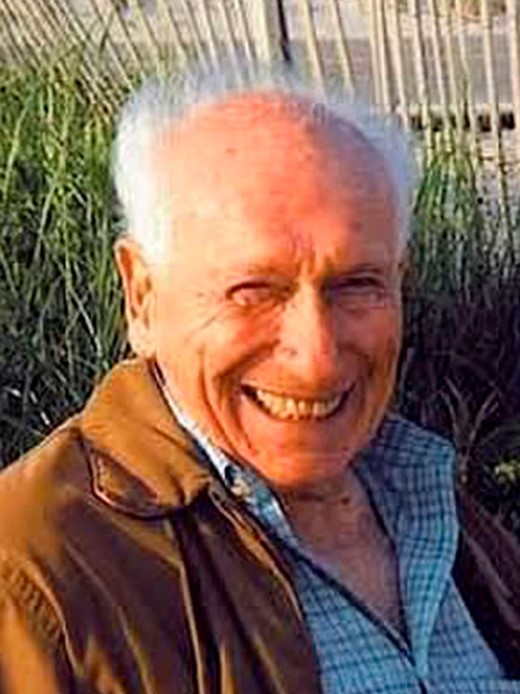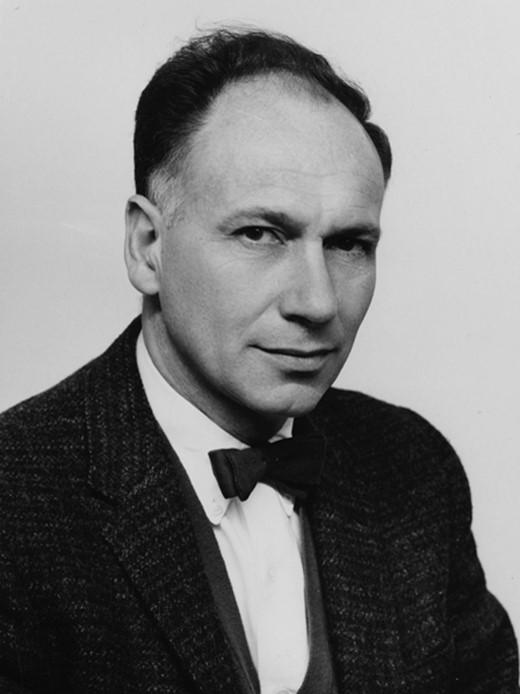-
PDF
- Split View
-
Views
-
Cite
Cite
Byron H. Waksman, M.D. (AAI ’50) 1919–2012, The Journal of Immunology, Volume 189, Issue 8, October 2012, Pages 3783–3784, https://doi.org/10.4049/jimmunol.1290059
Close - Share Icon Share
AAI thanks Ms. Nan Waksman Schanbacher, daughter of Dr. Byron H. Waksman, for kindly providing much of this tribute.
Byron H. Waksman, M.D., a distinguished immunologist who was a pioneer in the field of neuroimmunology, died on Sunday, June 17, 2012, in Lexington, Massachusetts. Dr. Waksman joined The American Association of Immunologists (AAI) in 1950, and his service to the association spanned the remainder of the century.

Family photo

Center for Biological Sciences Archives, UMBC
Dr. Waksman was elected to the AAI Council in 1965 and served in that capacity until 1970, when he was elected to the office of President, serving 1970–1971. He served on many AAI committees including the Program Committee (1977–1980), Awards Committee (1990–1993), Advisory-Search Committee for Limitation of Abstracts (1969–1970), and the First International Congress of Immunology Organizing Committee (1970–1972). His service to AAI also included efforts on behalf of The Journal of Immunology, where he served multiple terms as Associate Editor (1960–1966), as well as two terms on the Editorial Board (1966–1974). The AAI extends sincere condolences to the family of Dr. Waksman on their loss.
Dr. Waksman’s many colleagues, former students, and friends around the world cite his superlative teaching and the open, cooperative, and international atmosphere in his laboratories as his greatest legacy. AAI member David Scott (Professor of Medicine and Vice Chair for Research, Department of Medicine, Uniformed Services University of Health Sciences), remembers Dr. Waksman as “a great mentor, scholar and a true renaissance man. Indeed, a walk in the woods with Byron was an education. Most importantly, Byron was like a father to me and to most of us in guiding our life paths.” Dr. Waksman was also a close associate and friend of the Marine Biological Laboratory (MBL) in Woods Hole for nearly eight decades. His many contributions to the MBL community included the founding of the Pathogenesis of Neuroimmunologic Diseases course in 1990 and his founding and directing the Science Journalism Program in 1985. As president of the Waksman Foundation for Microbiology, he provided consistent support to several MBL programs, including the Microbial Diversity summer course, the Science Journalism Program, and the Living in the Microbial World teacher workshops.
Byron Waksman was born in 1919 in New York City. His family summered in Woods Hole, where his father, Selman (1952 Nobel Laureate in Physiology or Medicine), had a marine microbiology laboratory at the Woods Hole Oceanographic Institution. As a youth, Byron attended the Children’s School of Science and also volunteered at the MBL Supply Department (now the Marine Resources Center), where he was responsible for delivering starfish and other marine animals to MBL researchers.
After receiving his B.A. from Swarthmore College in 1940, Byron attended the University of Pennsylvania, where he completed his M.D. in 1943. Following his graduation, he was drafted into the army and served as part of the postwar reconstruction governments in France and Germany. Upon returning to the United States, he carried out postdoctoral research at the Mayo Clinic and the Columbia University College of Physicians and Surgeons. His long academic career included appointments at both Harvard Medical School/Massachusetts General Hospital and Yale School of Medicine. He began his research career investigating experimental allergic encephalomyelitis, an animal model for multiple sclerosis, and similar inflammatory diseases of the nervous system, which he termed “auto-immune” diseases. From studying the immunopathologic process, Dr. Waksman and his students proceeded to demonstrate the role of the thymus in both immune responses and tissue-specific tolerance. They are also credited with discovering several of the first and most important cytokines and contributed to early work on circulating lymphocytes (later known as T cells).
After retiring from academia, Dr. Waksman became Vice President for Research Programs and Medicine at the National Multiple Sclerosis Society, where he streamlined the granting process and worked hard to improve communication between the board, patients and their families, and the media. One of his greatest achievements was the creation of a series of yearly workshops that brought together physicians and scientists involved with multiple sclerosis, from basic research to clinical treatments. The workshops and their published summaries successfully promoted cooperative work and substantially moved the field of multiple sclerosis research and treatment forward.
Following his “second retirement” from the National Multiple Sclerosis Society, Dr. Waksman taught middle school students at the Salk School of Science in New York, an experience that convinced him of the urgent need to improve science education at the precollege level. As he stated, “The public understanding of science is crucial to the long-term health of the research enterprise on which our medical knowledge rests.”
Dr. Waksman’s father founded the Waksman Foundation for Microbiology in 1951 using patent royalties from the isolation of streptomycin, the first antibiotic for the treatment of tuberculosis. Byron Waksman directed the family foundation for more than 30 years. Here, too, he focused on improving scientific communication, both among scientists themselves and with the general public. After initiating the MBL Science Journalism Program, he created a similar international journalism program, the European Initiative for Communicators of Science, at the Max Plank Institute in Munich. He also launched a decade-long K–12 science education initiative focused on training classroom teachers to use hands-on microbiology exercises; the pilot workshop was held at the MBL in 1997.
Dr. Waksman traveled widely over the course of his career, attending scientific conferences and visiting France, Britain, Brazil, Venezuela, and Germany as an investigator or teacher. From 1961 onward, he served almost continuously on advisory panels of various government agencies, the World Health Organization, and the Rockefeller Foundation. He also served on the editorial boards of a number of scientific journals in the field of immunology. In addition to AAI, he was a member of many other societies in his field. Dr. Waksman published more than 350 papers and articles in leading scientific journals on subjects in his areas of interest in immunology and science communication.
Dr. Waksman is survived by his wife, Joyce; a son, Peter; a daughter, Nan Schanbacher; and five grandchildren. Memorial services took place in the summer in Woods Hole and in Lexington, Massachusetts.



